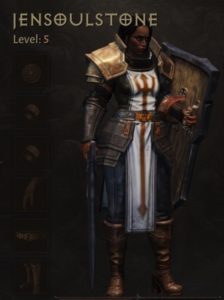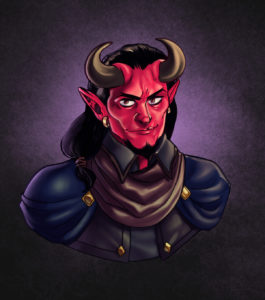 Diablo Immortal is currently in Closed Alpha. I was fortunate enough to have been given access to this wonderful, creepy, addition to the Diablo game series. There were two things that stood out immediately. This game includes more diversity in character options than previous games. It also provided me, a person with physical disabilities, with a game that feels very accessible.
Diablo Immortal is currently in Closed Alpha. I was fortunate enough to have been given access to this wonderful, creepy, addition to the Diablo game series. There were two things that stood out immediately. This game includes more diversity in character options than previous games. It also provided me, a person with physical disabilities, with a game that feels very accessible.
This version of the Closed Alpha focuses on the newly added Crusader class. The classes that were released in the Technical Alpha are still an option, but it appears that many players picked the Crusader this time around.
In Diablo Immortal, players pick a class and can choose to be either male or female. They then can decide what their character will look like based on three options: Black, White, or Asian. Each version of the female Crusader has scars across their faces (some more subtle than others). These are battle-hardened women who have seen some things and lived to fight another day.
This is noteworthy because it is the only video game I have played where all versions of the female character for a specific class have scars. In general, female characters in video games are designed to be pretty, and often look younger than the male version of the same class.
The other cool thing is that the default option was Black. The Diablo Twitter account featured the female Black Crusader in a video shortly before the Closed Alpha started. I chose to play as the Crusader I saw in that video because, to me, and to the Diablo team, she is the Crusader.
In Diablo III, players also have the option of playing a male or female character for whatever class they pick. There is only one race option per class. Crusaders in Diablo III are White; Wizards are Asian; Witch Doctors have dark skin, and a quick internet search reveals discussions about whether or not that class its portrayed in a racist way. Diablo Immortal provides an improvement by giving three customization options for each class.
Another great thing about Diablo Immortal is that it is very accessible. It is a mobile game, which gives players more options about how and where they play. My disabilities include chronic illnesses that often cause pain and exhaustion. It would be possible for me to play Diablo Immortal while I’m lying down and waiting for my medications to kick in. Mobile games give me the ability to play without having my hands hurt when I’m done.
I’ve noticed that Diablo Immortal has short quest lines (at least at the start) which are easier for people like me to finish in one go. There doesn’t seem to be a penalty for pausing after failing to kill a boss in a dungeon. The game lets you take a break when you need to, and starts you where you left off.
 Warchief Gaming has announced its first TTRPG (Table Top Role Playing Game) –
Warchief Gaming has announced its first TTRPG (Table Top Role Playing Game) – 

